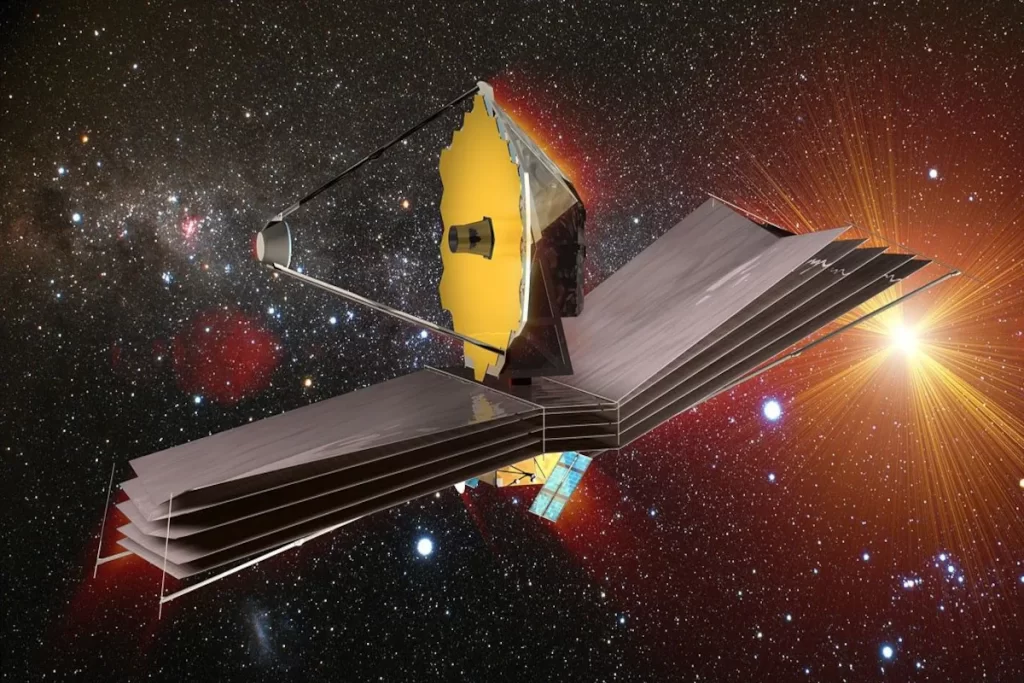The James Webb Space Telescope has turned its infrared eyes to investigate the newborn stars lying in their dusty cradle, creating a cosmic landscape called Pillars of Creation. The cherry-red streaks and waves in the new Pillars image revealed on Wednesday are jets of material squeezed from globs of gas and dust — tiny protostars — as they move toward stardom.
Webb’s Near Infrared Camera, or NIRCam, was used to capture the new image. The image, unveiled by NASA, showed the colossal gold, copper and brown columns with bright red, lava-like spots at the ends of several pillars.
The new Webb image was described as “just spectacular beyond words” by David Grinspoon, an astrobiologist at the Planetary Science Institute.
“Oh. My. Universe.” he tweeted.
The bright red orbs in the image are young stars, estimated to be only a few hundred thousand years old. As dense clusters of mass collapse under their own gravity and begin to heat up, new stars develop amidst clouds of dust and gas.
According to Thomas Zurbuchen, assistant administrator of NASA’s Science Mission Directorate, the Webb Telescope captured this dynamic journey.
“See those wavy lines that look like lava at the edges of the pillars? These are baby stars that are forming within the gas & dust,” he tweeted.
The Pillars are in the Milky Way’s Eagle Nebula, 6,500 light years from Earth, and are in the constellation Serpens, from the Latin word for “serpent.” On clear evenings in July and August, the nebula, also known as Messier 16, can be seen with the naked eye.
Admire it while you can: The nebula will be gone in a few million years, consumed by its fiery stellar progeny like a fleecy windblown cirrus cloud on a summer afternoon.
Webb’s predecessor, the Hubble Space Telescope, provided photos of the Pillars of Creation in 1995, which captivated space enthusiasts. Hubble returned to the famed Pillars in 2014, giving a considerably clearer image.

NASA expects Webb’s image of the Pillars of Creation “will help researchers revamp their models of star formation by identifying far more precise counts of newly formed stars, along with the quantities of gas and dust in the region.”
Astronomers said in a press release that the telescope’s observations would provide a more complete census of the nebula’s stars and their types, strengthening their models and theories of how stars form, escape from their dusty crèches, die, and pass on their substances to future generations. Dust to dust, ashes to ashes.

The telescope has served its purpose. The Pillars of Creation have recently dazzled scientists with new perspectives on a cosmos they thought they understood, with the enormous grandeur of the cycles of creation and destruction that characterise our galaxy’s seasons of existence.


